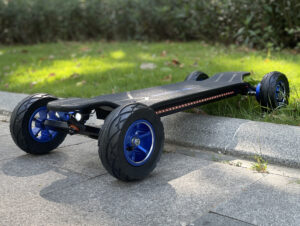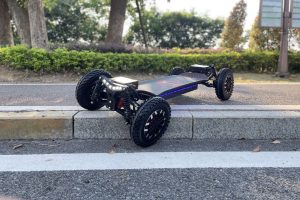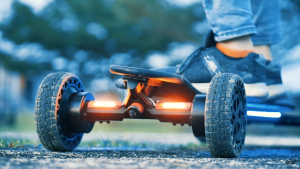Introduction
In the past few years, electric skateboards have rapidly grown in popularity as both a recreational activity and a viable commute option. Advances in battery life and motor efficiency have allowed e-skateboards to evolve significantly. Where they once struggled to travel more than a mile or handle minor inclines, today’s high-powered models easily glide several miles on a single charge while handling steep hills with ease.
For many riders, the core appeal of electric skateboarding is the sense of fun and freedom it provides. Nothing quite matches the thrill of carving down sidewalks and bike paths like a traditional skateboard but without exhausting leg work. With the simple press of a button, e-skateboards propel riders forward at speeds rivaling traffic. Yet their nimble nature also allows for tricks and maneuvers mimicking regular skateboarding stunts.

Bolstered by vivid online communities and public demonstrations of technical skills, e-skateboarding culture has grown rapidly in recent years. What was once frowned upon as a nuisance or safety hazard is now an accepted sight in more places. As their capabilities expand and social acceptance grows, e-skateboards have legitimized themselves beyond a passing fad. For busy professionals and health-conscious citizens alike, they offer a sustainable transportation alternative blending exercise with efficiency. Whether cruising to class or work, e-skateboarding stands out as a genuine way to travel while staying active and having fun.
Normal E-Skateboards
Normal electric skateboards are directly ridden by the user, requiring no remote control. Instead of a handheld device, the rider uses their body movements to control speed, braking, and steering. These typically integrate an internal mechanism comprising a deck, battery pack, and electric motors. The user’s weight and foot positioning determine speed and direction. Varying speeds may be included, along with braking controlled solely by rider input. Unlike remote-controlled models, these rely on a more intuitive physical interaction between rider and board, creating a different experience.
Remote-controlled e-skateboards
Remote-controlled electric skateboards take the fun of riding to new heights. Unlike regular electric boards, innovative remote-controlled models are maneuvered through a handheld remote from a distance. Powered by powerful lithium-ion batteries and state-of-the-art brushless motors, these boards can reach thrilling speeds and perform with unmatched agility.
At the core of remote-controlled e-skateboards is a clever system combining the board, batteries, and precision motors. An electronic controller precisely regulates the motors based on remote inputs. The remote communicates wirelessly with the board up to 30 feet using radio signals.
The remote acts as the rider’s command center. Throttle controls govern acceleration and braking. A steering wheel or joystick allows for nimble direction changes. As a result, remote-controlled e-skateboards merge advanced technology with dynamic riding. Riders enjoy unmatched control and responsiveness.

Comparison: Cost
When considering costs, remote-controlled e-skateboards usually carry a higher upfront expense than traditional models that don’t require additional controller technology. A quality remote setup often ranges between $500-$1000 depending on power, range, and features. Comparable traditional electric boards may cost several hundred less initially. However, remote skates do have lower long-term expenses. Traditional boards experience more wear and tear from physically skating, like replacing brake pads, bearings, and wheels more often. Batteries also degrade quicker with heavy usage. Remotely piloted e-skates avoid much of this maintenance through lack of direct contact. Spare parts and service expenditures should be less overall in the long run. Additionally, remote setups stay cleaner without the risk of water damage from rain riding. So, while remote control boards carry a premium at purchase, traditional setups may prove slightly costlier over several years of riding when accounting for maintenance and replacement components more regularly.
Comparison: Safety Considerations
From a safety perspective, remote-controlled e-skateboards have a clear advantage over models requiring direct handling. Riders can observe the environs without distraction and react more calmly from a distance should any issues arise. This removes the risks involved with avoiding obstacles, cars, or falling while mounted on the moving board. However, as discussed, reaction times may be marginally slower via remote. Traditional boards also demand more concentration on the road, which could divert attention from the surroundings temporarily. But their immediacy of control allows riders to handle any sudden issues more adeptly. Ultimately, following traffic laws, wearing protection, and skating within one’s abilities are important for all riders. But remote-control boards do enable beginners and younger skaters to enjoy the experience while still practicing from a safer vantage point versus jumping onto a regular electric board prematurely. With care, both styles can be safely enjoyed to suit different skill levels and riding goals.

Comparison: Maneuverability and Control
When it comes to agility and responsiveness, traditional electric skateboards have a clear advantage over remote-control models. By balancing and shifting your weight intuitively, skaters can carve, pump, and launch into slides with much finer precision. Every subtle movement translates instantly to steering adjustments and edge control. On uneven ground or at high speeds, this level of feel allows for split-second corrections. Remote control riders lack these sensitive feedback mechanisms. Handling broad turns and trajectories is possible, but intricate tricks and dancing take a degree of engagement that can only come from standing on the board. Additional latency from wireless signals also reduces the immediacy of throttle and brake response compared to connecting directly through your feet. However, remote control does enable performing maneuvers from a safer distance without risking falls or flying off during risky stunts. So, each has its place depending on the intended use.
Conclusion
In conclusion, both remote control and traditional electric skateboards have their place depending on personal needs and skill level. Remote boards allow skating from a safe distance without the balancing ability required and suit beginners, younger riders, or observers. However, they sacrifice much of the engagement, responsiveness, and flow of standing upon the rolling deck. Traditional setups demand more dedicated practice but reward with a sensation of intuitive carving and control for dynamic maneuvers. From a cost perspective, remotes carry a higher upfront price but likely lesser long-term maintenance fees. While remotes remove risks of direct falls, traditional skaters command street handling advantages. Ultimately, either style can be an accessible and thrilling way to cruise if applied judiciously based on individual needs, terrain, and local safety laws. With proper protections and gradually developing skills over time, both offer modes of personal transport and recreational fun riding that continue expanding skate culture.
Read More
- Can You Overcharge An Electric Skateboard – Ecomobl
- Top 10 Off Road Electric Skateboards On The Market – Ecomobl
- Electric Skateboard Wheel Upgrade – Ecomobl
- Black Friday Electric Skateboard Deals – Ecomobl
- Beginners Electric Skateboards Guide – Ecomobl




